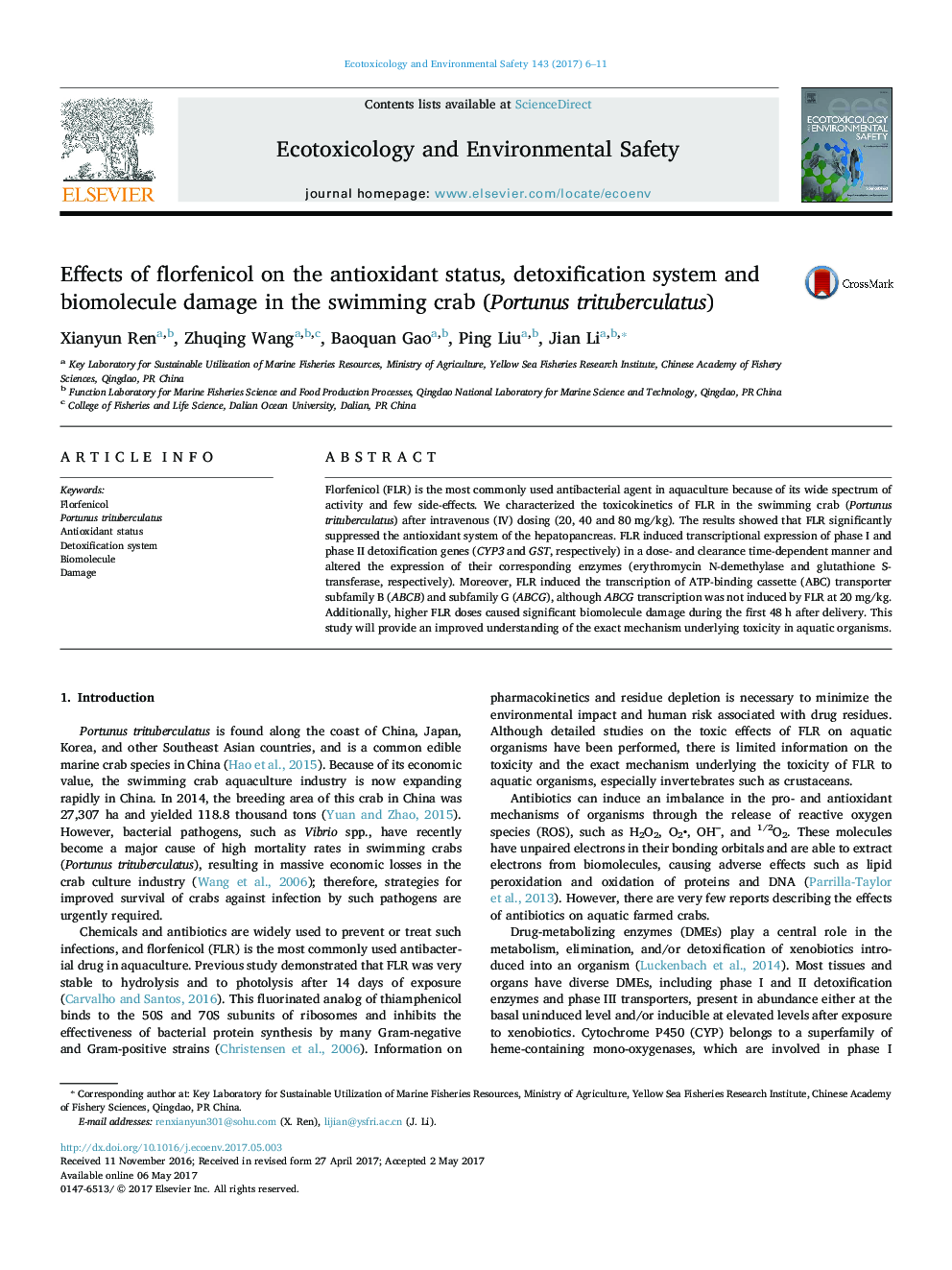| Article ID | Journal | Published Year | Pages | File Type |
|---|---|---|---|---|
| 5747543 | Ecotoxicology and Environmental Safety | 2017 | 6 Pages |
â¢We investigated the effects of FLR on the hepatopancreas of Portunus trituberculatus.â¢Injection FLR significantly suppressed the antioxidant system of P. trituberculatus.â¢FLR affected genes and enzymes related to detoxification and caused biomolecule damage.â¢ABCB and ABCG transporters may be involved in the detoxification of FLR.
Florfenicol (FLR) is the most commonly used antibacterial agent in aquaculture because of its wide spectrum of activity and few side-effects. We characterized the toxicokinetics of FLR in the swimming crab (Portunus trituberculatus) after intravenous (IV) dosing (20, 40 and 80Â mg/kg). The results showed that FLR significantly suppressed the antioxidant system of the hepatopancreas. FLR induced transcriptional expression of phase I and phase II detoxification genes (CYP3 and GST, respectively) in a dose- and clearance time-dependent manner and altered the expression of their corresponding enzymes (erythromycin N-demethylase and glutathione S-transferase, respectively). Moreover, FLR induced the transcription of ATP-binding cassette (ABC) transporter subfamily B (ABCB) and subfamily G (ABCG), although ABCG transcription was not induced by FLR at 20Â mg/kg. Additionally, higher FLR doses caused significant biomolecule damage during the first 48Â h after delivery. This study will provide an improved understanding of the exact mechanism underlying toxicity in aquatic organisms.
